When the people behind Hunt wheels showed BikeRadar the designs for a bike it was developing under the Privateer brand with radical geometry and a modest price, I knew it would be very interesting if they pulled it off. Now I’ve spent four months riding the Privateer 161 and I’m anything but disappointed.
- Best dropper posts | Recommendations and our buyer’s guide
- Best mountain bikes under £1,000
- Privateer bikes goes shorter travel with the new 141
The Privateer 161 is the first bike from the UK-based company and sports 161mm of travel with genuinely vanguard geometry that's aimed at enduro racers, or those who just like charging hard over rough terrain and don't want to spend a fortune.
You can buy the 161 as a complete bike for £2,989 – great value given the solid components used (the RRP of the components alone adds up to around £2,400). The frame only option is great value too, at £1,489, if you’ve got specific tastes or parts lying around.

I've built up a bike with a mix of well-proven parts and cutting-edge components. The bike will be my test rig for a slew of different components over the coming months, my regular ride and, Covid-willing, something I'm hoping to race on.
I've already been riding this bike for four months as I write this, so read on to find out how it performs.
Privateer Bikes 161 frame details
The burly frame (in XL) weighs a hefty 4.6kg (that’s with shock and hardware but not the headset) but it appears built to last. Although it’s Privateer’s first bike, it’s designed by the man behind the Nukeproof Mega, Alastair Beckett, and made in Taiwan by Genio, a factory that produces frames for many established brands including Pivot and RAAW.
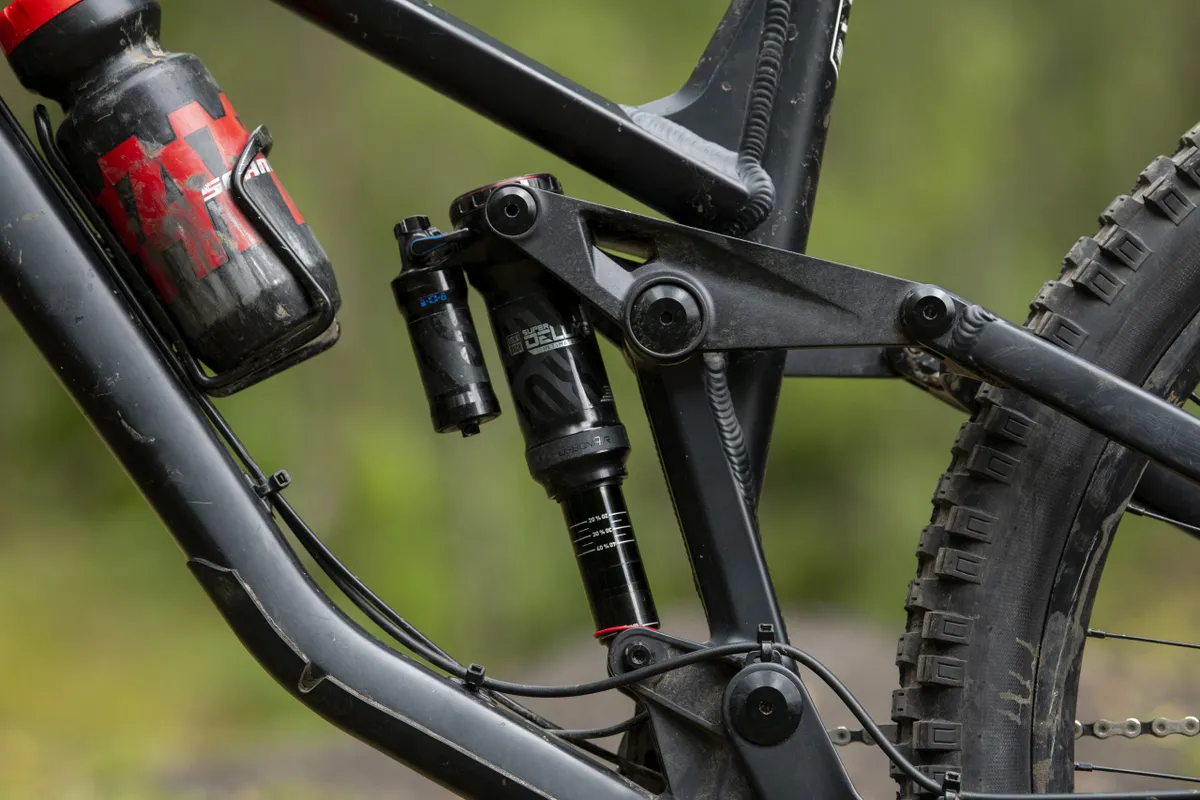
The main pivot houses not two but three bearings; the extra one reinforces the driveside because it sees more load due to the asymmetry caused by the chainring.
With a threaded bottom bracket and mostly external cable routing, it’s easy to work on too – although installing the internal dropper post cable is tricky and it relies on the head tube cable guide to keep it from rattling in the frame. Personally, I'd rather keep the dropper cable out of the down tube altogether.
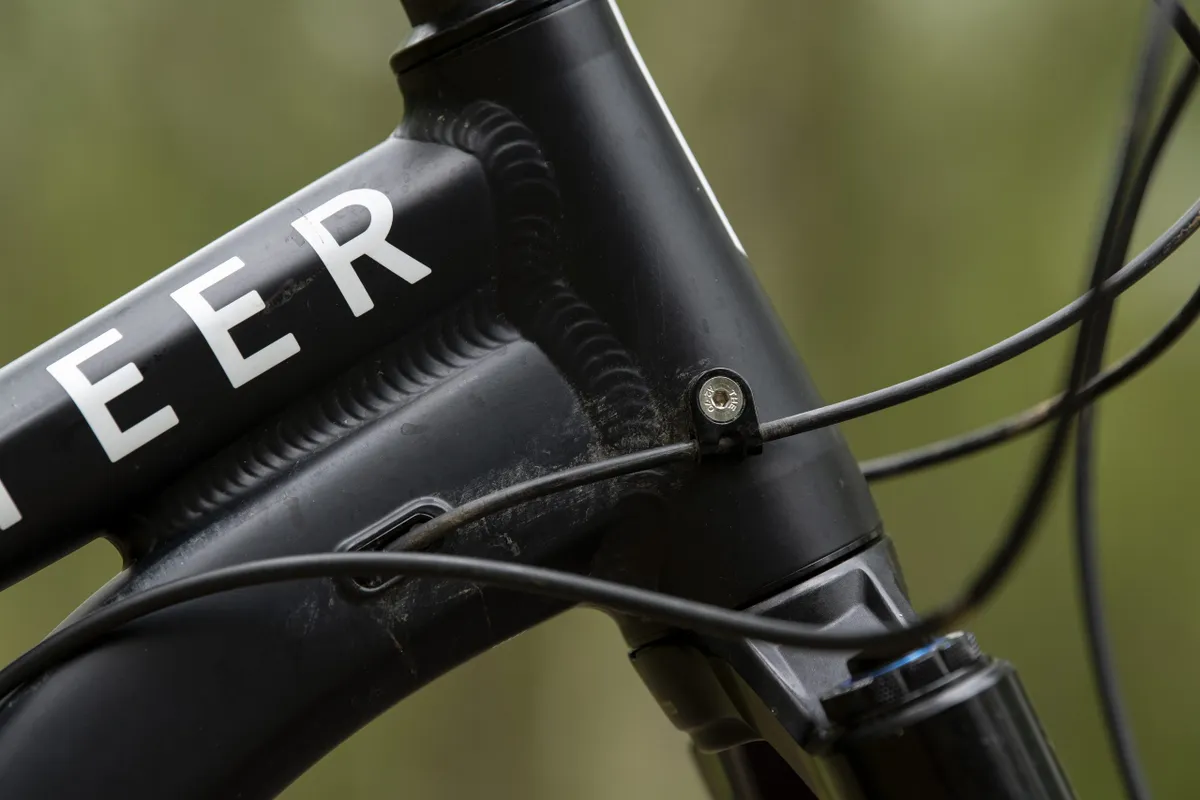
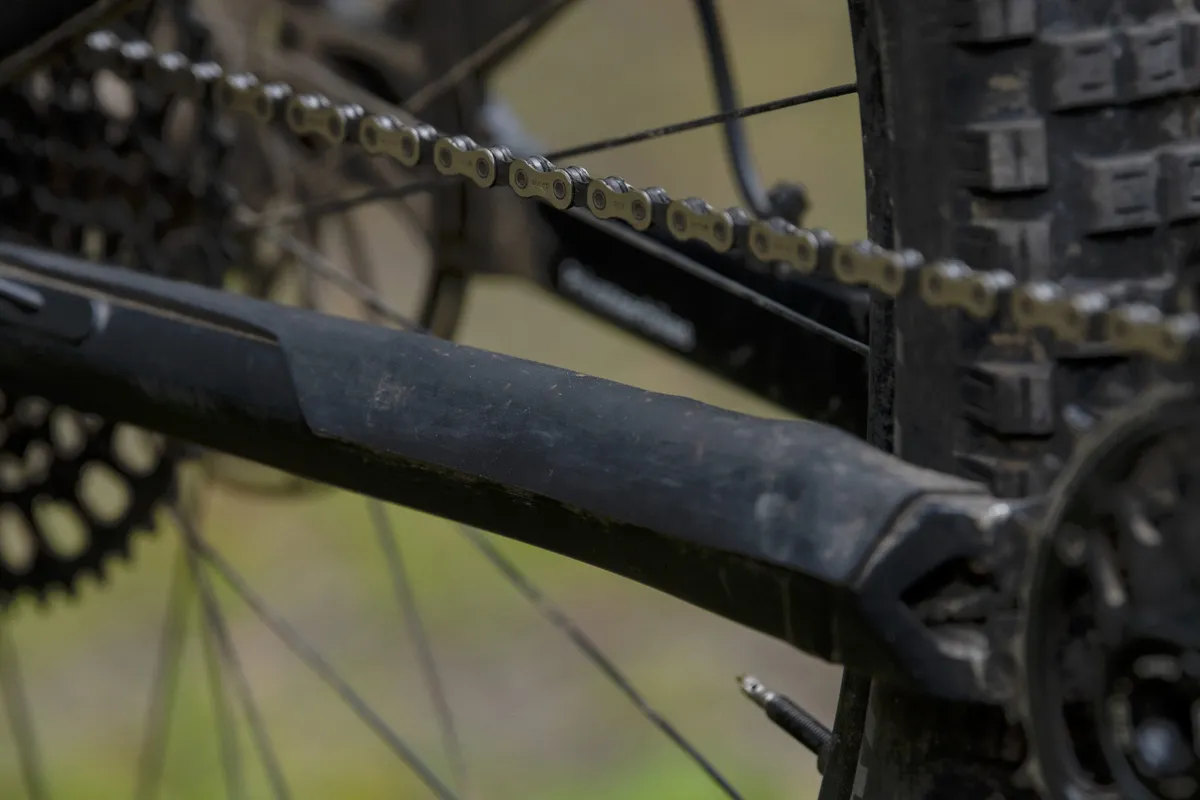
So far the only reliability problem I’ve experienced has been some persistent creaking from the lower shock bushing. Sanding down the bushing pin has put a stop to this for now, though.
I also found the bottom of the shock wasn't perfectly aligned with the rocker link, so the shock naturally sat closer to one side of the rocker link. This is surprisingly common even on high-end bikes and it doesn't seem to affect suspension performance in this case, but it's not ideal.

For now, I've addressed this by removing the lower bushing spacers and manually aligning the shock perfectly with the rocker link. This works just fine, but I might try washers or mismatched spacers to maintain perfect alignment.
Privateer says it's looking into both of these issues.
Privateer's response
Here's what Privateer's Sam Meegan had to say on the issues with my test frame:
"Truthfully I’ve not had much chance to investigate too deeply, none of our bikes here do it, so will like to take a closer look at yours when it’s back...
We’re in the process of taking on an in-house engineer to focus on Privateer. This will give us so much more capability to test and problem solve, plus prototype, which’ll be great.
Ali Beckett will still be our main engineer and designer, but the new colleague will work closely to help push development forward.
As for your shock alignment, that is odd. I’ve not seen anything similar yet, but this would be covered under warranty and we would replace this frame for a customer.
Again, I don’t want to sound dismissive of your issues, it’s really valuable feedback, so will be dissecting your bike to find out what’s causing the alignment issue.
I know in your suspension podcast you weren’t a fan of the RS tune generally, which is something we’re working on. We have a new compression tune and piston, plus a linear rebound set up. We’re still in early days of testing, but signs are good. It should give us a bit more sensitivity and reactiveness, whilst still offering nice mid to end stroke support... Always keen to hear your thoughts as it’s the best way for us to get better."
Privateer Bikes 161 suspension details
The 161 uses a Horst-link suspension design (meaning it has a pivot on the chainstay) to deliver 161mm of travel. A one-piece rocker link drives a trunnion-mounted shock via bearings, with a fixed lower shock mount using a standard RockShox bushing.
The linkage is moderately progressive (there’s around 18 per cent progression from sag to bottom-out). That means it should work well with a coil shock, although I was happy with the stock air shock and preferred the two volume spacers that come with it.
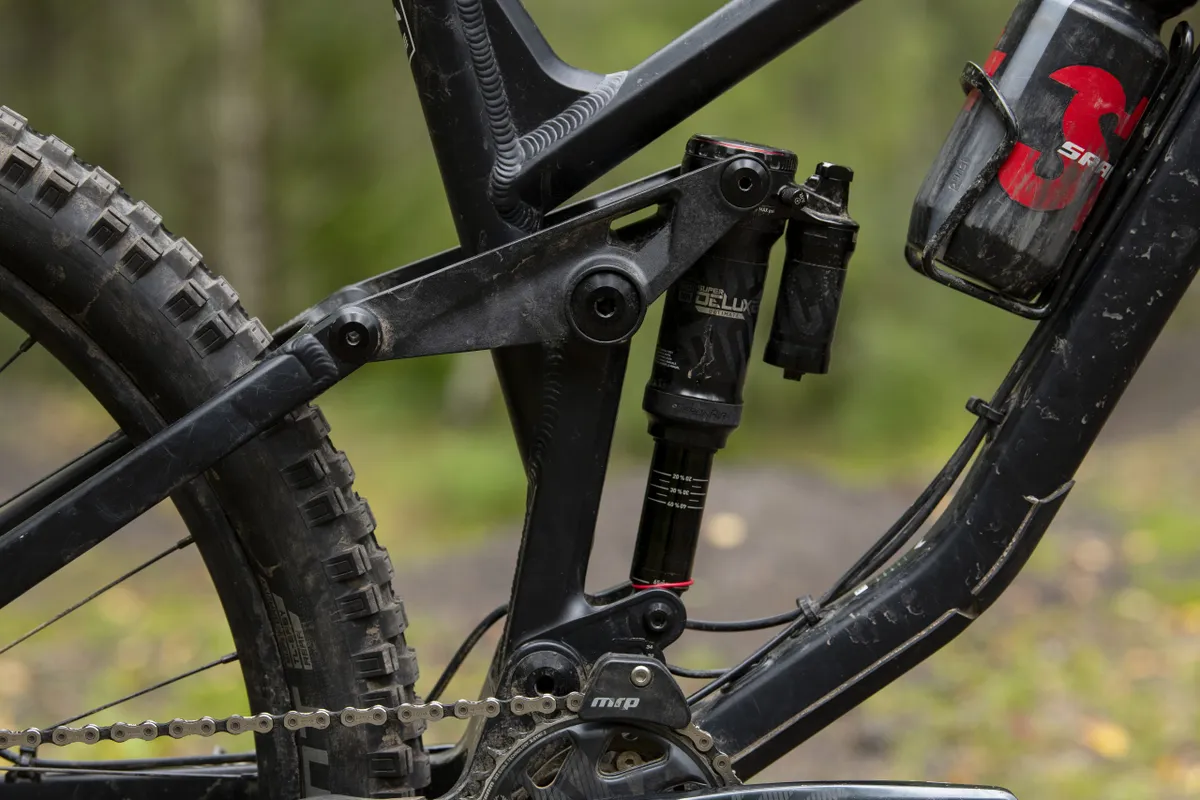
Anti-squat is decidedly on the high side, which means it stays high in its travel and feels firm under power.
Due to the Horst-link layout and the long rocker link, the anti-rise (the effect of braking on the suspension) remains low, topping out at under 50 per cent.
This means the rear suspension extends and rides higher in its travel while braking relative to some suspension designs, particularly those with single-pivot or VPP layouts.

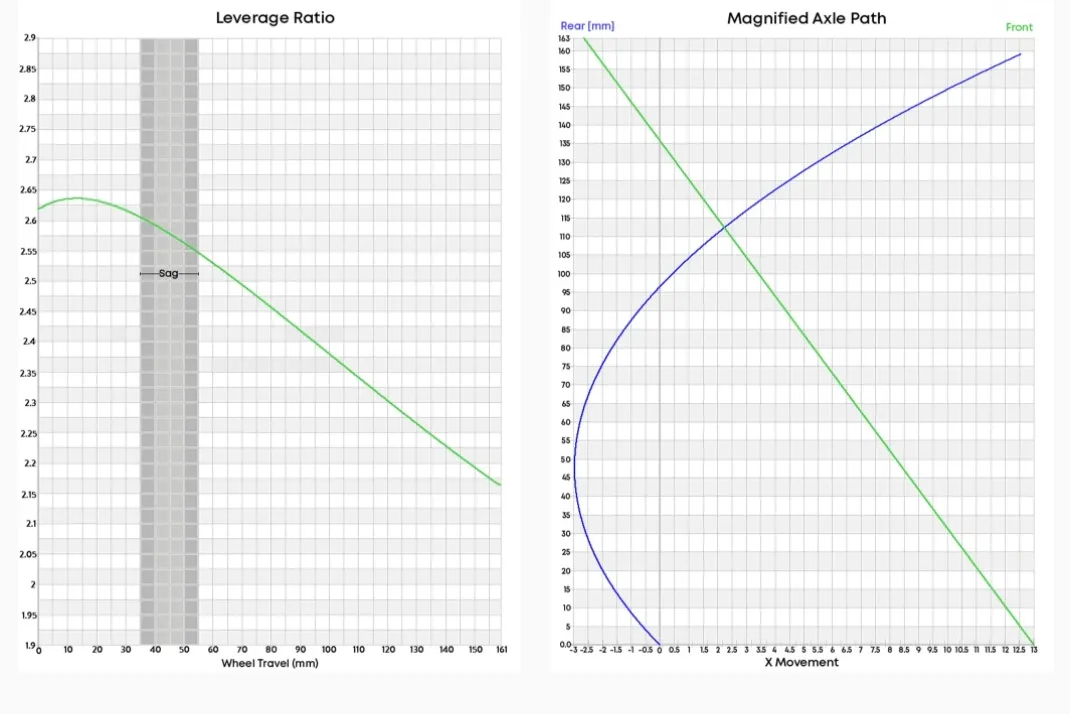
The RockShox SuperDeluxe Ultimate shock uses a medium rebound tune and a light compression tune. While this worked pretty well for me, I hope to experiment with different damping tunes before the next update to see if I can make it work even better.
It's worth remembering that the top-tier Super Deluxe Ultimate shock is a real treat on a frame at this price. The tuning options, ease of setup and reliability have impressed on this bike and others, and while the lockout isn't exactly necessary on this bike, it's still nice to have.
Privateer Bikes 161 geometry
The 161 is available in four sizes, the smallest of which uses 650b wheels while the rest are 29ers. The chainstay length grows by 6mm between sizes, from 434mm in size 1 to 452mm in size 4 (tested).
This helps all sizes to have a similar front to rear weight distribution. As a bonus, the size 4 has buckets of tyre clearance – a 29 x 2.6in tyre fits in with loads of room to spare.
| Size | P1 | P2 | P3 | P4 |
|---|---|---|---|---|
| Reach (mm) | 445 | 470 | 490 | 515 |
| Stack (mm) | 613.36 | 633.99 | 642.97 | 651.96 |
| Head tube angle (degrees) | 64 | 64 | 64 | 64 |
| Seat tube length (mm) | 400 | 420 | 450 | 480 |
| BB drop (mm) | 15 | 30 | 30 | 30 |
| Wheelbase (mm) | 1221.75 | 1250.29 | 1278.69 | 1316.08 |
| Chainstay length (mm) | 434 | 440 | 446 | 452 |
| Head tube length (mm) | 120 | 110 | 120 | 130 |
| Top tube length | 553.15 | 581.79 | 603.37 | 629.96 |
| Actual seat tube angle (degrees) | 75.31 | 75.44 | 75.49 | 75.53 |
| Effective seat tube angle (degrees) | 80 | 80 | 80 | 80 |
The below geometry numbers are measured from my size 4 bike with the components I've fitted (see further down), hence there are a few differences relative to the above chart from Privateer's website. Most notably, the wheelbase with a 170mm RockShox Zeb is about 15mm longer than advertised.
Measured geometry (Size S4 / XL):
- Head angle: 64.1 degrees
- Seat angle: 80 degrees
- Chainstay: 454mm
- Seat tube: 480mm
- Effective top tube: 630mm
- Head tube: 130mm
- Bottom bracket height: 344mm
- Wheelbase: 1,330mm
- Reach: 515mm
Privateer Bikes 161 specification
I originally built a burly bike with the new RockShox Zeb Ultimate fork (170mm travel), 2.6in Schwalbe Eddy Current tyres, mismatched alloy wheels, MRP chainguide, SRAM’s latest GX Eagle 12-speed drivetrain and SRAM Code RSC brakes.
These components are constantly being swapped out to test new parts and I've already tested the bike with the 2020 and 2021 versions of the RockShox Lyrik as well as the Fox 38 and RockShox Zeb. Reviews of those are in the pipeline.
Why did I choose this bike?
I love a bargain and I love a long bike.
I spent a lot of time last year riding the Pole Machine TR and I really liked the shape of that bike. In the real world, the 161 measures up very closely in terms of geometry. But, if you compare Privateer's full-build option to the Machine TR, it's over two grand cheaper and comes with nicer parts.
Privateer Bikes 161 ride impressions
Climbing performance
The first thing you’ll notice hopping on the 161 is the very steep (80-degree) effective seat tube angle, which puts your hips very far forward and your back into an upright position. Despite the whopping 515mm reach, the bars sit quite close to your legs, but once the trail points upwards this position makes perfect sense.
It’s relaxed and efficient even on the steepest climbs, and because the rear suspension stays high in its travel and barely bobs under power (thanks to high levels of anti-squat) it’s surprisingly spritely for an enduro bike, despite the 16.5kg weight of this build.
It's supportive under power and doesn't collapse into its suspension even on the steepest climbs, so the benefit of that 80-degree seat angle isn't diminished when you need it most. If there's one bike worthy of the "doesn't need a lockout" cliché it's this one, but I still use it for steep tarmac slogs where every Watt helps.
The theoretical downside of high anti-squat is that it can make the suspension less active when pedalling over bumps, yet the 161 pedals over bumps surprisingly well. I put this down to the central seated position. When the rear wheel hits a bump, the bike pivots around the front axle. Sitting further forwards puts you closer to that pivot and therefore isolates the rider from bumps.
The 161 is not designed for flat rides – the steep seat angle puts more weight on your hands, which could get tiring after a while – and while I haven't taken the 161 on a tour of Holland, I've not found the position uncomfortable or inefficient when riding the occasional flat section.
Descending performance
The long and slack geometry may take some getting used to if you’re familiar with a more traditional mountain bike shape. Because of the long front-centre, it pays to put pressure on the bar in flat turns so the front wheel is properly loaded.
Pulling a manual or bunny hop takes a more deliberate approach than a shorter bike too. Raising the bar helps the long reach to feel more manageable on steep descents and makes the bike easier to throw around – it also helps to reduce the weight on your hands when pedalling seated.

Once you get the hang of it, the Privateer can really rail turns. The long front-centre, low bottom bracket and slack head angle mean there’s no danger of the front wheel tucking under or spitting you over the bars, so you can really throw your weight around and attack the corners, especially if they’re rough or steep.
The long wheelbase (1,330mm) both allows you to corner more aggressively and requires you to – once you understand this, even the tightest turns are no problem.
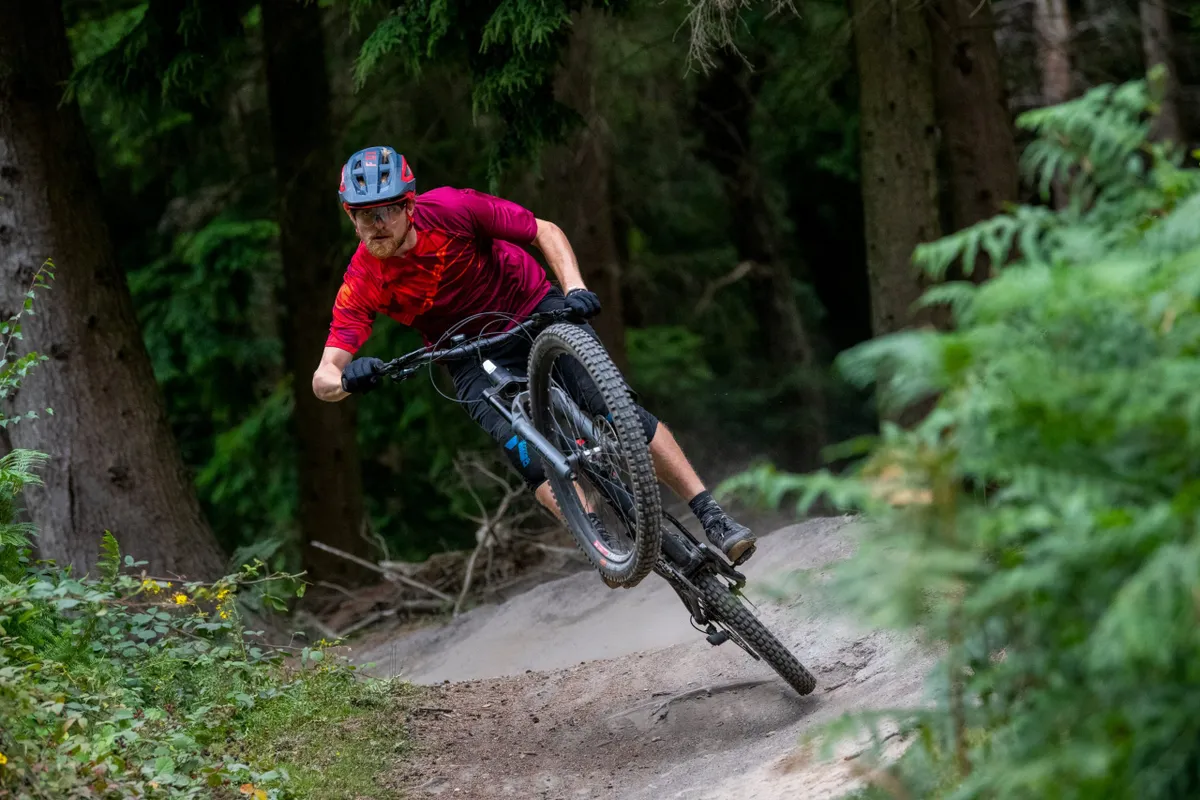
That long wheelbase also means there’s less diving and tripping when slamming into bumps and holes, so it’s stable and settled in the most hectic terrain.
It encourages you to look further ahead, brake less and enjoy the feeling of rallying through chunky terrain. The rear suspension does rise up a little more than some bikes when hard on the brakes, but this isn't enough to upset the balance of the bike, it just makes it even more important to drop the heels and push into the pedals to keep the rear wheel gripping.
Setup with 28 per cent sag (measured seated, not standing) and with two volume spacers installed, the suspension provides a predictable build-up of support throughout the travel, yet full travel remains accessible when landing hard and it sucks up big hits brilliantly.
There's just enough support to pump and push through corners without the bike feeling lazy, but I'd say it's slightly biased towards swallowing bumps than staying high in the travel.
The compression damping is light, and winding on the low-speed compression doesn't do a whole lot to add support, so those who want a particularly firm suspension setup may want a firmer compression tune installed.
Personally, I like the suspension to move freely over bumps to help maintain momentum and reduce fatigue, so I'm happy with the stock compression tune for now.

When hitting kicky jumps or landing hard, the suspension rebounds from deep in the stroke quite fast unless the rebound is set to feel slightly too slow in the car park. I'm going to try a linear rebound tune (in place of the digressive one that comes stock), which should make it more predictable on big hits while helping it track the ground better on small chatter.
This is more of an experiment than a criticism, though. I have no issues riding flat-out with the stock setup, where the supple suspension contributes to the 161’s surefooted handling in rowdy terrain.
While the issues with my test frame are frustrating and stop it getting five stars for now, nothing I've ridden so far comes close to this level of performance at this sort of price. In fact, for the steep, fast enduro-style riding it's designed for, it's a phenomenal bike regardless of the price.
This is not just a great enduro bike for the money, it's a great enduro bike full stop. Despite a couple of niggles with the frame, Privateer seems to have pulled off a giant-killer. I will report back once I've spent even more time on the Privateer Bikes 161, so stay tuned!
Product
| Brand | PrivateerBikes |
| Price | 1489.00 GBP |
| br_whatWeTested | Privateer Bikes 161 P4 frame set |
| Weight | 4600.0000, GRAM (P4/XL) - Frame and shock only |
Features
| Fork | RockShox ZEB Ultimate, 44mm offset |
| br_stem | Race Face |
| br_chain | SRAM GX Eagle |
| br_frame | 6066-T6 Alloy, 161mm travel horst-link suspension; 29x2.6” tyre clearance (with room to spare); full-size water bottle capacity; threaded BB and ISCG05 tabs |
| Tyres | Schwalbe Eddy Current |
| br_brakes | SRAM Code RSC |
| br_cranks | SRAM GX Eagle, 32 tooth chainring, 170mm long |
| br_saddle | Specialized Power |
| br_wheels | DT Swiss EX471 (f), CrankBrothers Synthesis alloy (r) |
| br_shifter | SRAM GX Eagle |
| br_cassette | SRAM GX Eagle 10-52 |
| br_seatpost | Vecnum Nivo 212mm travel |
| br_handlebar | Race Face Atlas |
| br_rearShock | RockShox SuperDeluxe Ultimate |
| br_bottomBracket | SRAM DUB |
| br_availableSizes | P1, P2, P3, P4 |
| br_rearDerailleur | SRAM GX Eagle |
| Features | 6066-T6 Alloy, 161mm travel horst-link suspension; 29x2.6” tyre clearance (with room to spare); full-size water bottle capacity; threaded BB and ISCG05 tabs |
